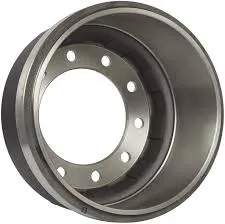
-
 Afrikaans
Afrikaans -
 Albanian
Albanian -
 Amharic
Amharic -
 Arabic
Arabic -
 Armenian
Armenian -
 Azerbaijani
Azerbaijani -
 Basque
Basque -
 Belarusian
Belarusian -
 Bengali
Bengali -
 Bosnian
Bosnian -
 Bulgarian
Bulgarian -
 Catalan
Catalan -
 Cebuano
Cebuano -
 Corsican
Corsican -
 Croatian
Croatian -
 Czech
Czech -
 Danish
Danish -
 Dutch
Dutch -
 English
English -
 Esperanto
Esperanto -
 Estonian
Estonian -
 Finnish
Finnish -
 French
French -
 Frisian
Frisian -
 Galician
Galician -
 Georgian
Georgian -
 German
German -
 Greek
Greek -
 Gujarati
Gujarati -
 Haitian Creole
Haitian Creole -
 hausa
hausa -
 hawaiian
hawaiian -
 Hebrew
Hebrew -
 Hindi
Hindi -
 Miao
Miao -
 Hungarian
Hungarian -
 Icelandic
Icelandic -
 igbo
igbo -
 Indonesian
Indonesian -
 irish
irish -
 Italian
Italian -
 Japanese
Japanese -
 Javanese
Javanese -
 Kannada
Kannada -
 kazakh
kazakh -
 Khmer
Khmer -
 Rwandese
Rwandese -
 Korean
Korean -
 Kurdish
Kurdish -
 Kyrgyz
Kyrgyz -
 Lao
Lao -
 Latin
Latin -
 Latvian
Latvian -
 Lithuanian
Lithuanian -
 Luxembourgish
Luxembourgish -
 Macedonian
Macedonian -
 Malgashi
Malgashi -
 Malay
Malay -
 Malayalam
Malayalam -
 Maltese
Maltese -
 Maori
Maori -
 Marathi
Marathi -
 Mongolian
Mongolian -
 Myanmar
Myanmar -
 Nepali
Nepali -
 Norwegian
Norwegian -
 Norwegian
Norwegian -
 Occitan
Occitan -
 Pashto
Pashto -
 Persian
Persian -
 Polish
Polish -
 Portuguese
Portuguese -
 Punjabi
Punjabi -
 Romanian
Romanian -
 Russian
Russian -
 Samoan
Samoan -
 Scottish Gaelic
Scottish Gaelic -
 Serbian
Serbian -
 Sesotho
Sesotho -
 Shona
Shona -
 Sindhi
Sindhi -
 Sinhala
Sinhala -
 Slovak
Slovak -
 Slovenian
Slovenian -
 Somali
Somali -
 Spanish
Spanish -
 Sundanese
Sundanese -
 Swahili
Swahili -
 Swedish
Swedish -
 Tagalog
Tagalog -
 Tajik
Tajik -
 Tamil
Tamil -
 Tatar
Tatar -
 Telugu
Telugu -
 Thai
Thai -
 Turkish
Turkish -
 Turkmen
Turkmen -
 Ukrainian
Ukrainian -
 Urdu
Urdu -
 Uighur
Uighur -
 Uzbek
Uzbek -
 Vietnamese
Vietnamese -
 Welsh
Welsh -
 Bantu
Bantu -
 Yiddish
Yiddish -
 Yoruba
Yoruba -
 Zulu
Zulu
Jan . 31, 2025 05:30
Back to list
dot brake drum requirements
Ensuring optimal performance and safety in motor vehicles leans heavily on the proper installation and maintenance of brake systems. At the core of these systems, the brake drum plays a pivotal role, particularly in vehicles adhering to the stringent DOT (Department of Transportation) brake drum requirements. These requirements serve as a benchmark for safety and performance, imposing certain standards that manufacturers and users alike must observe. Here's an insightful dive into the intricacies of DOT brake drum requirements, leveraging experience, expertise, authoritativeness, and trustworthiness.
Experience from industry veterans sheds light on common pitfalls and challenges associated with brake drum maintenance. Regular inspections are imperative; monitoring wear patterns, cracks, or any form of degradation can preempt potential failures. Implementing predictive maintenance strategies can further enhance operational safety, extending the lifespan of brake drums and ensuring consistent compliance with DOT standards. The expertise embedded in technical training programs equips automotive professionals with the knowledge required to manage and maintain DOT-compliant brake drums effectively. Training workshops complement theoretical understanding with practical, hands-on sessions, providing technicians with the tools needed to diagnose, repair, and optimize brake systems efficiently. Ultimately, upholding the principles of experience, expertise, authoritativeness, and trustworthiness in manufacturing and maintaining DOT-compliant brake drums ensures not only compliance with regulations but also fosters a culture of safety and reliability within the automotive industry. For consumers, it translates into peace of mind knowing their vehicle's braking system is robust and dependable under varied driving conditions. The continuous evolution and enrichment of brake technology affirm a steadfast commitment to safety. By prioritizing adherence to DOT requirements, the entire automotive ecosystem—manufacturers, technicians, and consumers—collaborates towards the shared goal of safer roads and enhanced vehicular performance.


Experience from industry veterans sheds light on common pitfalls and challenges associated with brake drum maintenance. Regular inspections are imperative; monitoring wear patterns, cracks, or any form of degradation can preempt potential failures. Implementing predictive maintenance strategies can further enhance operational safety, extending the lifespan of brake drums and ensuring consistent compliance with DOT standards. The expertise embedded in technical training programs equips automotive professionals with the knowledge required to manage and maintain DOT-compliant brake drums effectively. Training workshops complement theoretical understanding with practical, hands-on sessions, providing technicians with the tools needed to diagnose, repair, and optimize brake systems efficiently. Ultimately, upholding the principles of experience, expertise, authoritativeness, and trustworthiness in manufacturing and maintaining DOT-compliant brake drums ensures not only compliance with regulations but also fosters a culture of safety and reliability within the automotive industry. For consumers, it translates into peace of mind knowing their vehicle's braking system is robust and dependable under varied driving conditions. The continuous evolution and enrichment of brake technology affirm a steadfast commitment to safety. By prioritizing adherence to DOT requirements, the entire automotive ecosystem—manufacturers, technicians, and consumers—collaborates towards the shared goal of safer roads and enhanced vehicular performance.
Prev:
Latest news
-
Rear Drum Brakes Maintenance TipsNewsAug.04,2025
-
Key Components Affecting Brake Drum FunctionNewsAug.04,2025
-
Important Inspection for Truck Drum BrakeNewsAug.04,2025
-
How to Prepare for Changing Rear Drum BrakesNewsAug.04,2025
-
Essential Tools for Cleaning Drum Brakes ProperlyNewsAug.04,2025
-
Brake Drum Function GuideNewsAug.04,2025
-
Safety Features of Red Brake DrumsNewsAug.01,2025
